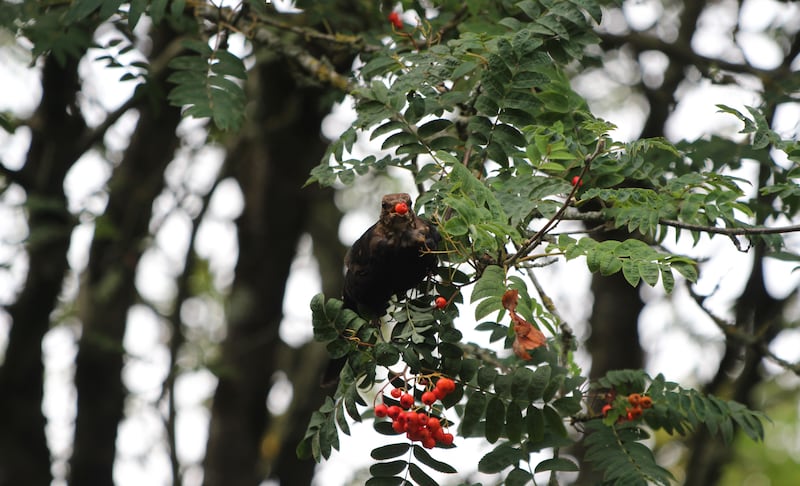Though it’s a good way away yet, as Doolough Lodge is about to undergo renovations, plans for a garden are currently on the table. I was fortunate to catch up with the wonderful Mary Reynolds, who is up here in north Mayo looking at a possible landscape project in the grounds of Westport House.
As the youngest contestant to win a gold medal at the Chelsea Flower Show for her design, titled Tearmann sí – A Celtic Sanctuary, Reynolds, aged just 27 in 2002, was catapulted on to the world stage of landscape design.
The Wexford woman gained huge acclaim, including from (then) Prince Charles, who for a moment thought her entry was his own at Chelsea. She was then engaged by the British government to design a garden for the Royal Botanical Gardens at Kew, which she duly did, citing WB Yeats’s poem the Stolen Child as inspiration.
The 2016 film about her early life, Dare to Be Wild, detailing the journey from rank outsider to gold-medal winner at Chelsea is well worth a watch.
READ MORE
Since then, having been commissioned to create the Delta Sensory Gardens in Carlow, Gairdín Bhríde in Galway (inspired by Celtic festivals) and New Ross Library Park, where trees planted correlate to the Ogham alphabet, Reynolds has become what she terms a “reformed landscaper”.
Now a best-selling author, she is founder of the global movement “We are the ARK”, “a practical groundswell movement that finally shifts the environmental game in nature’s favour”. Having come full circle with design, she challenges people “to give back any land under your care to nature, to re-wild, to be ‘ARKed’”, which she terms as “acts of restorative kindness” to the earth.
Moving away from chemicals, fertiliser and toxic sprays, Reynolds, the daughter of a soil scientist, sees gardeners as conservationists, and gardens themselves as hosts to help combat a natural world that has been poisoned: “We have removed the native community of plants, which are the foundation stone of all life on earth, and replaced them with prettier ones, which are not helpful at all to ecosystems.”

She goes on to explain how the natural chemicals in plants are just not suited to our insects or birds. “Look at berries. People are always going on about planting berries, but our birds need native berries as they have a high-fat content. Non-native berries have a far-too-high sugar content for our birds – it’s like them eating sweets,” she says. In effect, she sees the garden industry in Ireland as a “fast-food restaurant” that supports the industry and not habitats, something she is trying to change.
So how can we ARK our gardens? “You can start by planting a window sill,” says Reynolds, “while our insects might still feed on non-native plants, they have nowhere to lay eggs, and remember larvae is the foodstuff for 70 per cent of our birds.”
She champions ponds: “It is so hard for creatures to find a clean source of water. By installing one they have a better chance of survival, and watching birds having a bath is just so rewarding.”
You can still have a heavily designed garden but it should be focused on habitat and food. That can be achieved by remembering that your garden is an entire ecosystem. A mown path through a meadow “replaces large herbivores that would have grazed here, offering a place for smaller wild flowers like daisies to grow, and these are places that blackbirds like to feed”, she says.
She likens meadows to nature’s seedbanks, reminding me that every square foot of healthy soil has already 5,000 seeds (often damaged in suburbia). Her advice is to leave native plants in situ as they give better diversity and support for our critters and birds. Creating woodland floors using mosses, foxglove and ferns as well as bare earth mounds for ground-nesting bees is central to her designs, as is the use of native trees to create wildlife corridors.
In urban gardens Reynolds suggests using a trellis with honeysuckle or native ivy as a home for moths and butterflies, while log piles “are just loved by creatures”, she says. She also advocates for “hedgehog highways” to prevent “islandisation” of creatures cut off from neighbouring gardens due to block-built walls. She recommends leaving a gap the size of a compact disc so the furry little things aren’t stuck in one place for eternity.
If you are interested to hear how her concepts can help save the planet and support our wildlife habitats, Reynolds is giving two talks next week in my neck of the woods: On Monday, March 18th she will address the community at Áras Inis Gluaire in Béal an Mhuirthead (Belmullet) while on Tuesday 19th, she will host a talk at the Westport Plaza Hotel on behalf of Westport Civic Trust.


















